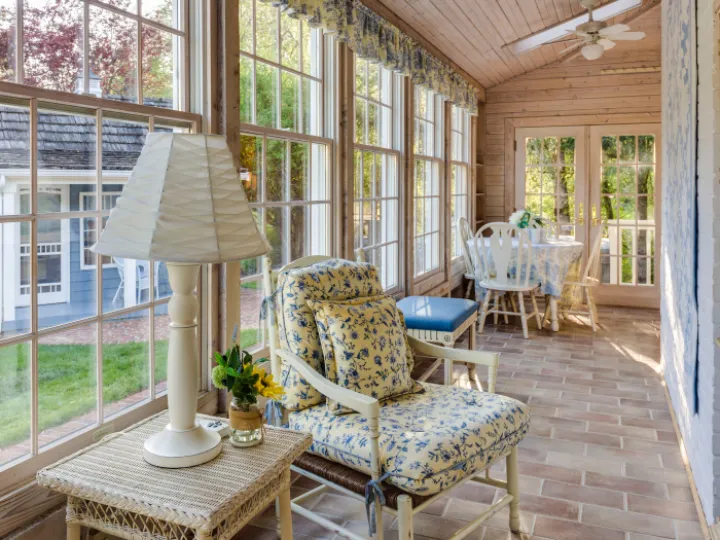Planning consent for a conservatory
Adding a conservatory or sunroom to your home is one of the best ways to improve your lifestyle and increase the value of the property.
Conservatories extend the living space to your home and add lots more light and space.
They can serve multiple functions, from a dining room to a children's play area and, with some clever layout, they can transform your living space.
But, conservatories and sunrooms need planning to get the best value and the most benefit.
Planning a new conservatory is not simple. Although planning permission, for example, is easier than it once was, this is just one area that can be confusing.
At Select Window Systems, we promise to offer our best help and advice on planning, designing, choosing and installing a new conservatory, sunroom or orangery.
Conservatories and planning permission
Planning laws on adding a conservatory to your home were updated in 2019 to simplify the process. Planning permission is needed before you can build on or change the use of land or buildings. Consent may depend on the scale, visual appearance and any effect on neighbouring properties.
You can build some structures without planning approval, and these can sometimes include conservatories and small single-storey extensions. Still, it is highly recommended that you check with the local authority planning office first.
Since 2019, adding a conservatory may not require planning permission, depending on the property's relative size and the conservatory. For example, a 6-metre-long conservatory for a terraced or semi-detached home in England will not need planning consent. For detached houses, this extends to 8 metres.
There are other height and boundary restrictions, and you can't, for example, use the whole of your garden for a new conservatory. Detailed advice on rules, with examples, is outlined on the government's website at technical guidance for home extensions .
Before building a conservatory
Your conservatory or sunroom extension may not need full planning permission, but that doesn't mean you can go ahead and build what you like. Homeowners must notify the council before work begins, and neighbours can object if amenities or enjoyment are affected.
The local authority may block plans or ask for changes to be made. Your property may also not have 'permitted rights' to build or could be in a protected area where special building rules will apply. Different procedures exist in Scotland, Wales, and Northern Ireland.
Conservatories and building regulations
People often confuse planning permission with building regulations. The former are rules on what you can build, and the latter are rules on how to build. Building regulations cover a project's safety, thermal efficiency, and environmental impact.
Smaller conservatories can be exempt from building regulations but only if conditions are met, such as a door or window separating it from the house and an independent heating system. If you remove a room wall between your home and conservatory, you will need building regulations approval. Again, different rules apply in Scotland and Northern Ireland.
Other restrictions on conservatories
Whether or not your new conservatory requires planning permission or building regulations approval, there may be other things to consider. If the conservatory is to be erected within three metres of a public sewer, then you must contact the local water supplier, who will check it to see no damage has been caused.
Conservatories built in conservation areas or attached to listed buildings will probably need full planning permission, and some houses may have restrictive covenants included in the title deeds. Neighbours must be considered, particularly if the conservatory is built near the boundary. A 'party wall' agreement may be required if foundations are excavated close to the garden fence.
Designing a conservatory
When designing your conservatory, there are many things to consider. It is essential to make sure you have thought about every detail. After all, you will invest a large amount of money and wish to enjoy your conservatory or sunroom for many years. Some critical areas often get overlooked, and before placing an order, it is important to think about areas such as the following:
What will the conservatory be used for?
Will the conservatory need heating or air conditioning?
Will it look better with full-height windows or transom bars?
What is the overall internal size required?
Is it worth installing easy-clean glass?
Will the conservatory need obscure glass for privacy?
While nowhere near an exhaustive list, these are questions that often crop up when installing a conservatory for our Cheshire customers.
More on design issues
The best type of bifold door
Sunroom design considerations
Choosing bi-fold or sliding
CALL 01606 863553
For a FREE quote on window replacement.
Disclaimer
Select Window Systems accepts no responsibility or liability for any damages or costs of any type arising out of or in any way connected with your use of this website. Select Window Systems cannot be held liable for any actions taken in reliance on any published content, which is for information purposes only.
Select Window Systems
Phone: 01606 863553
Email: hello@swsonline.co.uk
Visit: Unit 2, Woodford Court, Winsford, Cheshire, CW7 2RB
Cheshire doors and windows.
Window and door installations across Cheshire.


